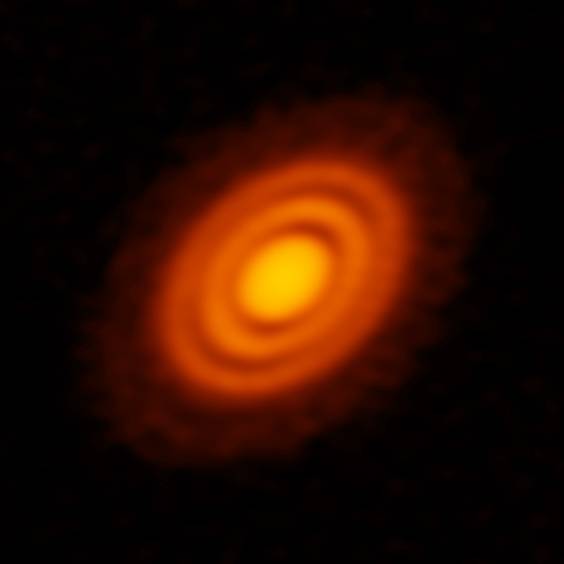04.07.2018
New Jupiter-like exoplanets discovered
Astronomers have used a novel technique to reveal the hitherto unsuspected presence of protoplanets in orbit around a young star. Prof. Dr. Birnstiel, researcher at the Universe Excellence Cluster, was instrumental in the discovery.
Although more than 4000 fully formed ‘exoplanets’ have now been discovered in mature star systems outside our own, much remains to be learned about how planets evolve. It is now accepted that planets are born in protoplanetary disks filled with gas and dust that are associated with young stars. Unfortunately, the techniques used to find fully formed exoplanets cannot be applied to the detection of young protoplanets in such systems. But now an international team of researchers, which included LMU physicist Til Birnstiel, has used a new approach that has enabled them to discern the tell-tale signs that the disk which encircles the star HD 163296 hosts two protoplanets. The new planetary search technique identifies unusual patterns in the gas flow within a planet-forming disk surrounding young stars. In parallel, a second team has employed a variant of the method to show that the system harbors a third planet. Both papers have now been published in Astrophysical Journal Letters.
“A few years ago, the first hints of multiple ring structures were discovered within the gas and dust that make up protoplanetary disks. These faint rings were taken to indicate the presence of young planets,” Birnstiel says. “However, the possibility could not be ruled out that alternative mechanisms were responsible for the formation of these rings,” he adds. Taking advantage of the high resolution attainable in at radio wavelength with the Atacama Large Millimeter/Submillimeter Arrays (ALMA) of the European Southern Observatory – an international radiotelescope located high in the Chilean Andes – astronomers have now tackled this issue using a completely new approach. They used ALMA to measure the distribution and the radial velocity of the carbon monoxide gas within the disk around HD 163296, looking for perturbations in gas flow that would signal the presence of protoplanets. The star itself is about four million years old and some 330 light-years from Earth.
Disturbances in gas flow reveal the location of new planets
Carbon monoxide molecules emit electromagnetic radiation at radio wavelengths, which can be readily detected by ALMA. Subtle changes in the wavelengths of the emission lines resulting from the Doppler shift reveal the radial velocity of the gas. This in turn allowed Birnstiel and his colleagues to infer its rate of rotation of within the disk with high precision, and to search for variations that might be correlated with the presence of planets. The other group was able to measure the actual velocity of the gas flow, which allowed them to probe the outer regions of the disk. “The data show that the radial velocity of the gas varies in exactly the kind of pattern one would expect if its motions were perturbed by three planetary bodies, each with a mass approximately equal to that of Jupiter. This is a very good indication that planets have indeed formed within the disk,” Birnstiel says. “So this method can be employed to find young planets that have escaped our notice up to now.”
Publication:
R. Teague et al.: A Kinematic Detection of Two Unseen Jupiter Mass Embedded Protoplanets
Contact:
Prof. Dr. Til Birnstiel Ludwig-Maximilians-Universität Munich
University Observatory Munich/Exzellence Cluster Universe
Phone: +49 (0) 89 2180 6973
E-mail: til.birnstiel@lmu.de






